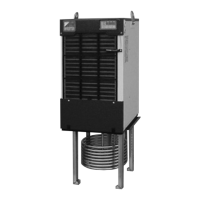
Do you have a question about the Daikin AKZJ8Series and is the answer not in the manual?
Guidelines and warnings for installing the unit correctly and safely.
Important safety instructions for operating the unit properly and avoiding hazards.
Steps and checks required for the initial installation of the unit.
Criteria for selecting the installation location and details on oil piping.
Methods for turning the unit ON and OFF using different control options.
Instructions for installing a suitable circuit breaker for the unit.
Step-by-step guide for connecting the unit's wiring.
Identifies models and lists key technical specifications.
Checks the surrounding atmosphere and conditions for safe operation.
Ensures the correct liquid level in the tank for proper unit function.
Specifies the types of liquids suitable for use with the cooling unit.
Description of parts for standard models and variants.
Description of parts specific to the different-voltage model.
Diagram and labels for the unit's control panel.
Explains the different operational modes available for the unit.
Procedure for switching between different operation modes.
Guides on how to modify the unit's operating parameters.
Procedure to set the unit for maintaining a constant tank liquid temperature.
Procedure to adjust tank liquid temperature based on ambient or machine temperature.
Setting the unit to control cooling based on a percentage of capacity.
Details on how to check various operational parameters and status.
Instructions for setting the ON timer to start the unit after a delay.
Overview of configurable functions like auto-tuning and warnings.
Configuring alarms for external protection devices.
How to use optional parts for tuning control based on machine temperature.
Instructions for connecting the unit to a main machine via optional boards.
Procedures for daily checks and cleaning of the unit.
Scheduled checks and cleaning for long-term unit health.
Guidelines for storing the unit when it will not be used for an extended time.
Troubleshooting steps for operational issues without active alarms.
A comprehensive list of alarms, their causes, and corrective actions.
